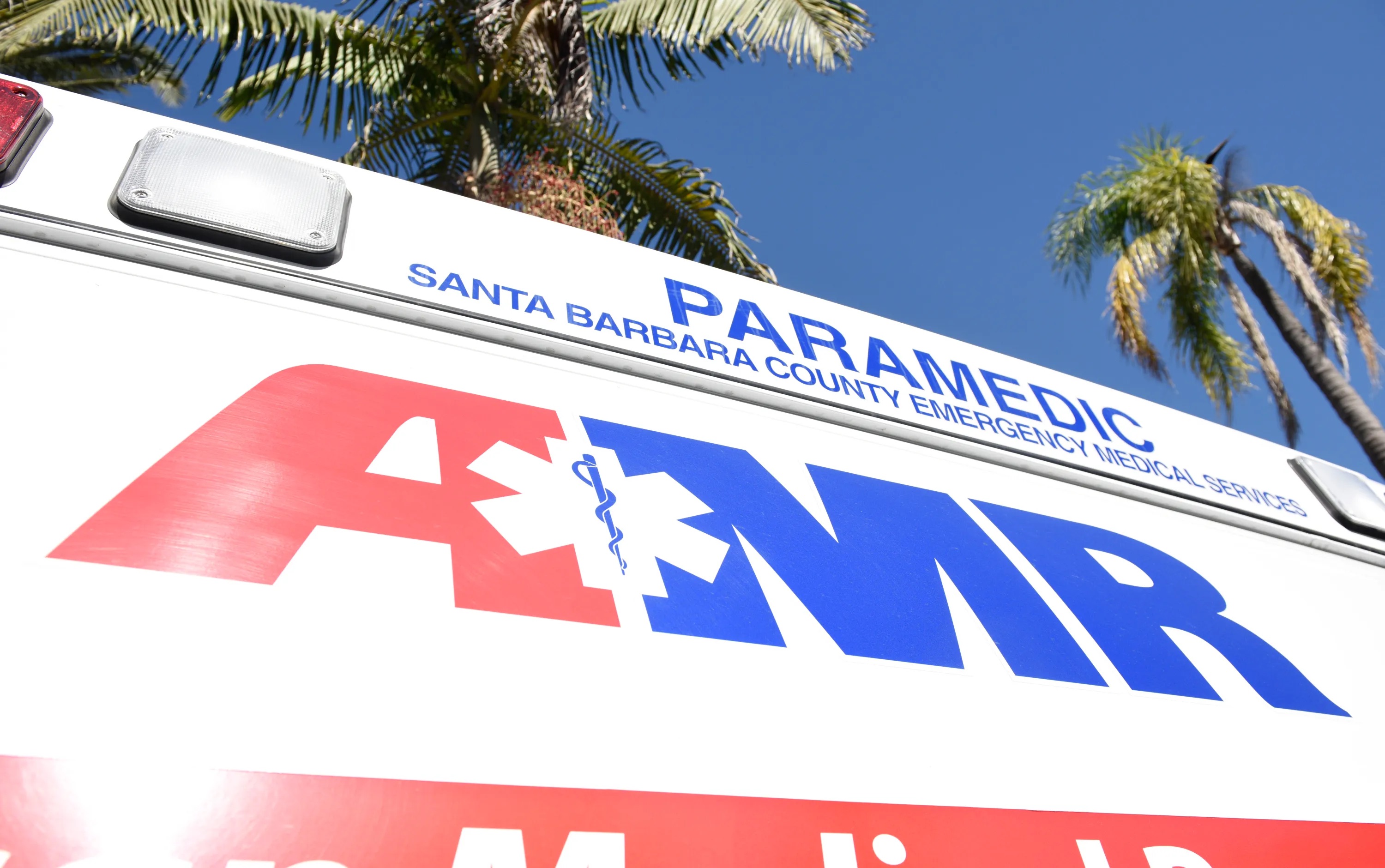AMR Contests Awarding of $1B Ambulance Service Contract to Santa Barbara County Fire
Board of Supervisors Violated State Law and Operated ‘Outside of Authority,’ County’s Longtime EMS Provider Contends

A mere 24 hours after the Board of Supervisors approved emergency ambulance permits for the Santa Barbara County Fire Department — and denied one to American Medical Response — AMR sent notice that it intends to contest the award of the permits.
Worth an estimated $1 billion, the 10-year ambulance contract is supposed to be given by the LEMSA, or the Local Emergency Medicine Services Agency, AMR contends, which for Santa Barbara County is the Public Health Department. Instead, by an ordinance created in April, the supervisors developed a permit system they would manage, with the finalists then going to Public Health for the contract. “State Law only allows LEMSAs to set the policies, rules, and procedures governing ambulance providers,” stated AMR through its parent company, Global Medical Response, in a press release.
Mike Rice, AMR’s vice president for operations, said that the county started under state rules through the Request for Proposal (RFP) process, “but stopped when it became clear we would be the winner.” The state rules include selecting a provider, he said. “The difference is [the county] has created a de facto system by issuing only one permit.” Santa Barbara County’s was an outlier process, Rice said: “I don’t think I’ve seen anything like this anywhere.”
In the Request for Approval (RFP) process, AMR scored 300 points higher than County Fire. Afterward, County Fire appealed — Fire Chief Mark Hartwig expressed incredulity his department would have fewer points than AMR for emergency services — and lost. The RFPs had been weighed by an independent panel, but scuttlebutt alleged that members of the independent panel had been employed by AMR at one time, and that one individual had rejoined the company after the RFP process. Whether that’s conjecture, undue influence, or simple work history is open to interpretation, but given AMR’s history in Santa Barbara County — which is 27 years, it turns out — and the relatively small field of emergency services, AMR has served as a training ground for emergency techs and paramedics, some of whom go on to careers with public agencies.
In deciding to award the permit to County Fire, the Board of Supervisors and County Counsel were specific in their rationales for the decision, both in how AMR had failed their process — which was for three separate permits — and how County Fire had prevailed.
In the case of AMR, the finding states AMR’s proposal demonstrated no community benefit “through innovative service delivery, local reinvestment,” or “an integrated public safety response.” This last refers to the three separate contracted services: response to 9-1-1 calls, transfer between facilities, and critical care transport. AMR only applied for 9-1-1 emergency response, the only profitable item of the three. Mike Sanders, AMR’s regional director, said on Tuesday that if they’d applied for all three and only received the last two, they wouldn’t be able to afford it.
Other issues were AMR’s lack of transparency, a reference to the company’s refusal to state ambulance availability, which it regards as proprietary information. The finding notes AMR gave no information about serving remote areas like Cuyama Valley, and it allows AMR to apply again.
As for County Fire, the finding states the supervisors considered “public health, safety, welfare, convenience, and necessity” in choosing the agency for the three permits the department had applied for. Audited financials had been provided, numerous innovations outlined, and the department already serves the Cuyama Valley, Mission Hills, and UCSB.
These outlying areas are traditionally unprofitable, Fire Chief Mark Hartwig said on Wednesday in an interview with the Independent. “The Fire Department is a safety net in these areas, as the ambulance companies are only interested in areas that are profitable.” He asked, “Why not operate in the profitable areas and reinvest the money in the unprofitable areas?”
Those are the innovative ideas the supervisors approved. Ideas like working with Behavioral Wellness on mental-health co-response, alternative destinations to the ER such as crisis centers, and community paramedicine — which allows paramedics to work in settings other than the scene of an emergency and transport — are noted in County Fire’s findings and lacking in AMR’s.
Rice refuted the idea that AMR had no innovations to offer. In the original RFP proposal, he said, AMR included transports with Behavioral Wellness and an integrative proposal to work with hospitals for orders online with an efficiency that satisfied their lead time.
The press release was AMR’s first salvo. Rice said that today AMR would be sending the county a notice to preserve all records for the civil lawsuit it intends to file next week. Calls to the county were not returned as of deadline.



